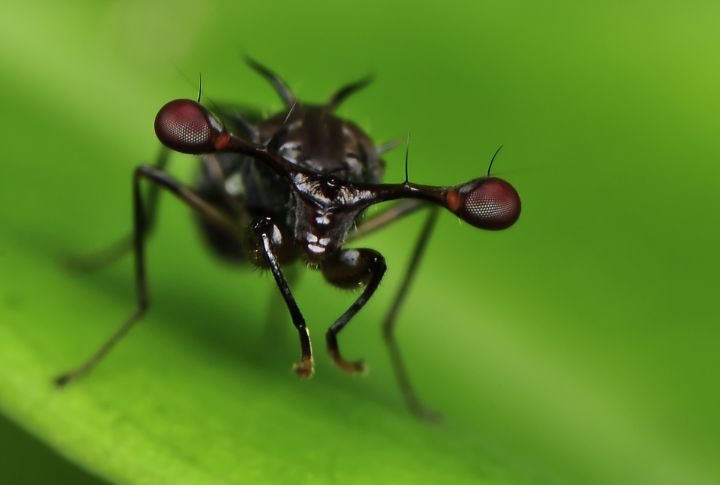
Most animals have their eyes in predictable places: two up front or perhaps on the sides. In each one of Earth’s biospheres, nature has hidden eyeballs in the most outrageous places. Why? For survival, maybe? Or maybe as a camouflage to mess with us. Keep reading to find 10 creatures who see the world in ways you’ve never imagined.
Flatfish (Paralichthys dentatus, Hippoglossus hippoglossus)
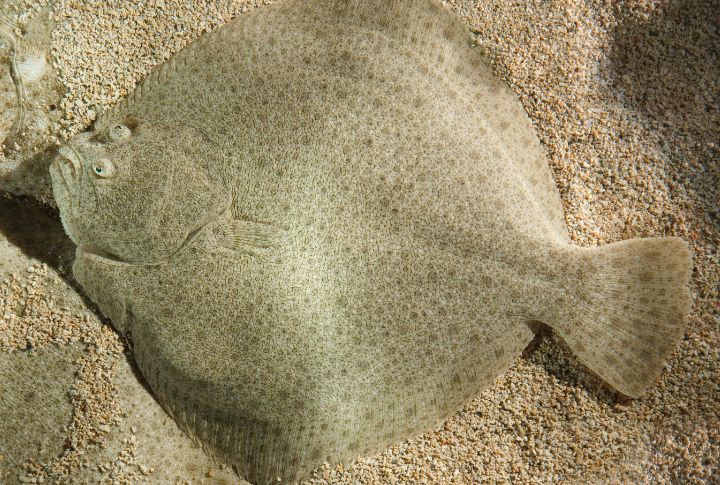
Flatfish aren’t born lopsided—they become that way. As they grow, one eye migrates to the other side so that both eyes face upward. That’s what gives them an ideal vantage point for scanning the water while lying motionless on the seafloor. Plus, their eyes swivel independently of one another.
Sea Urchin (Echinoidea)
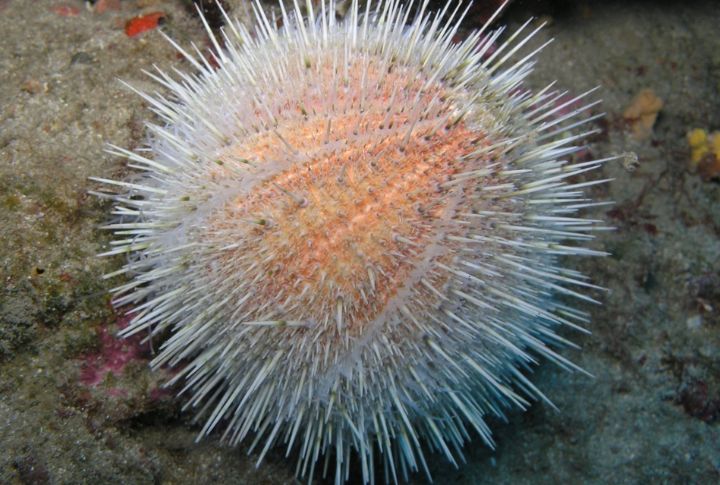
Unlike most animals, sea urchins don’t have eyes. Their whole body acts as one large, low-resolution eye. They move across the seafloor using tiny tube feet, which also detect light using the light-sensitive cells covering the feet and their entire body.
Chiton (Acanthopleura granulata)
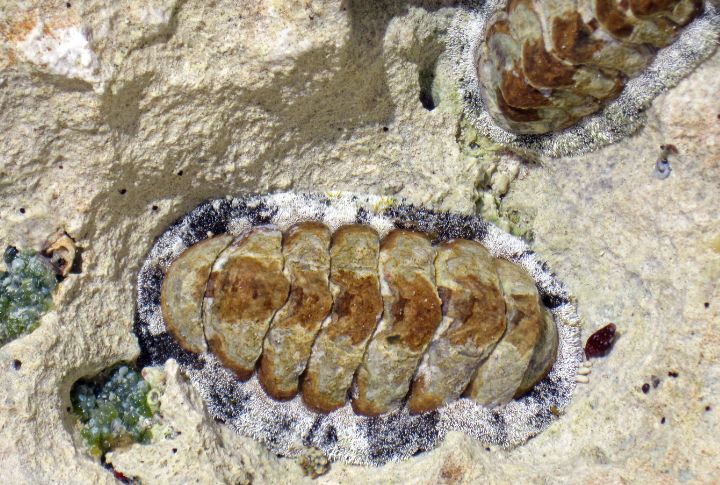
Chitons have rock-hard eyes with dozens of lenses made from aragonite (the same mineral that forms pearls) embedded in their shells. Usually, other animals have squishy eyeballs; these creatures see through nearly indestructible stone windows.
Scallop (Family Pectinidae)
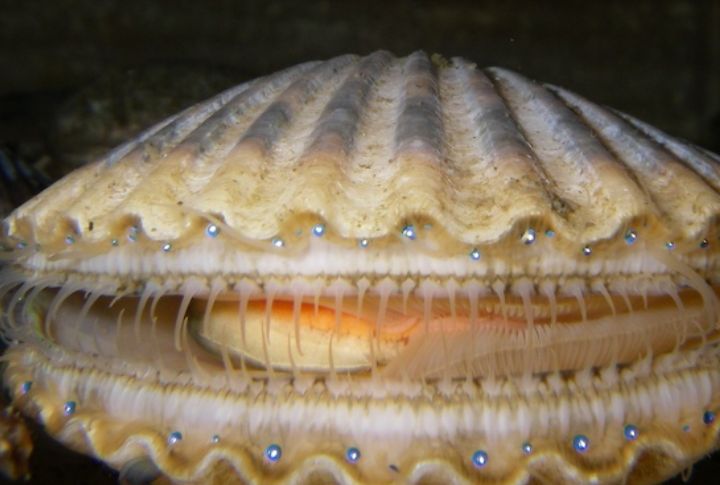
Scallops pack up to 200 tiny eyes along their shell edges like christmas lights. Instead of lenses, their eyes have concave mirrors that are used to reflect light around. Scallops’s independent eyes create a panoramic surveillance system that would impress any security engineer.
Horseshoe Crab (Limulus polyphemus)
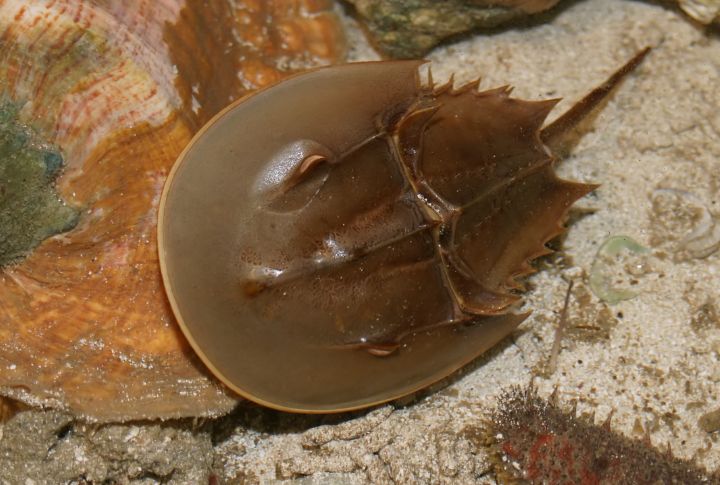
Nature went overboard with ten eyes scattered across a horseshoe crab’s body. The two large compound eyes dominate their shell, while smaller photoreceptors near the tail provide backup coverage. This multi-eye placement is also adapted to both day and night conditions.
Fiddler Crab (Uca vomeris)
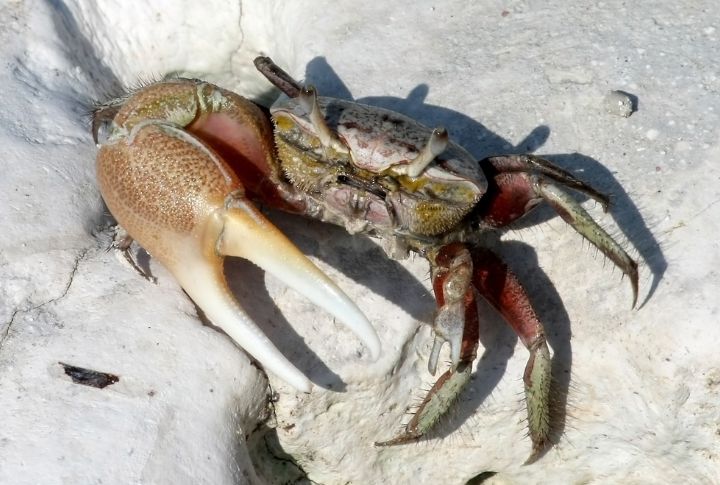
The eyes of fiddler crabs sit on movable stalks that work separately from each other, letting them scan for danger from different angles at once. This periscope design allows the crabs to watch for threats while staying protected in their burrows.
Box Jellyfish (Tripedalia cystophora)

Box jellyfish have 24 eyes, organized into four clusters called rhopalia, each containing different types of photoreceptors. They include sophisticated lens eyes with corneas and retinas that can form actual images and detect obstacles.
Stalk-Eyed Fly (Teleopsis dalmanni)
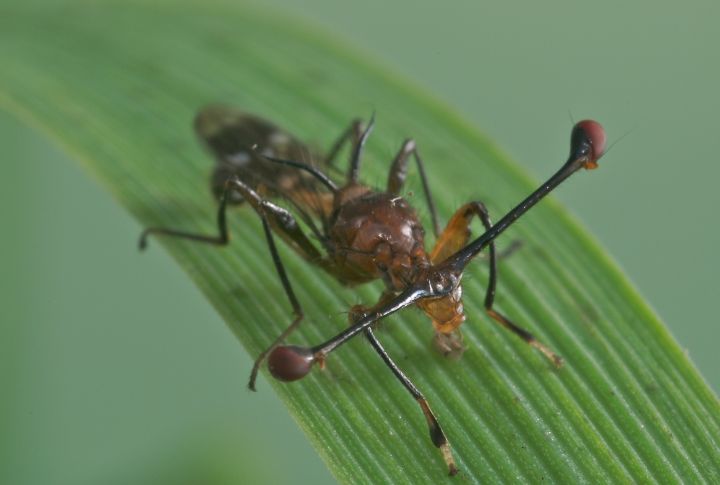
Ever seen a fly with eyes on stalks? To attract mates, stalk-eyed male flies wave their strange, extended eyes like tiny antennas, with longer stalks giving them a better shot. Their weird eye placement also gives them incredible depth perception.
Barreleye Fish (Macropinna microstoma)
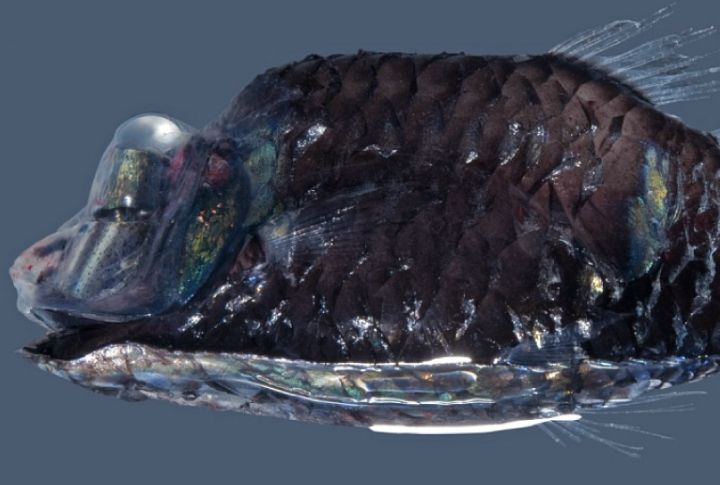
Deep-sea barreleye fish have transparent heads, showcasing tubular eyes that point upward, much like organic telescopes. During a prey hunt, the fish rotates its eyes forward to spot prey in the ocean’s twilight zone.
Four-Eyed Fish (Anableps anableps)
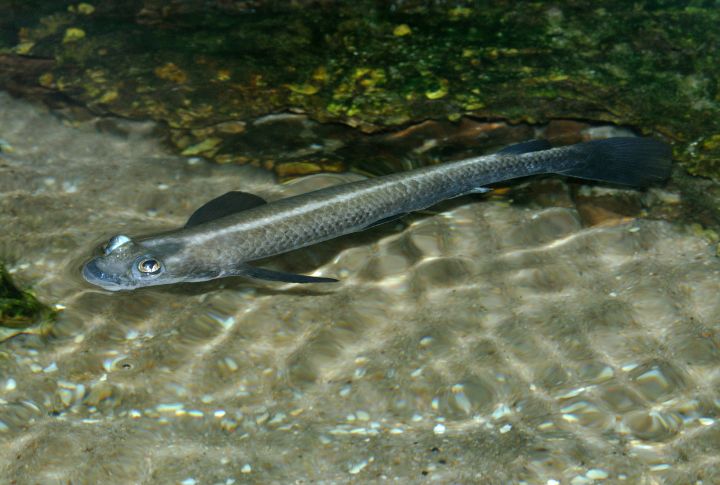
Four-eyed fish have each eye split horizontally. The top half sees above water, and the bottom half sees below. This adaptation enables them to simultaneously hunt insects skimming the water surface while watching for predators in the water below.

